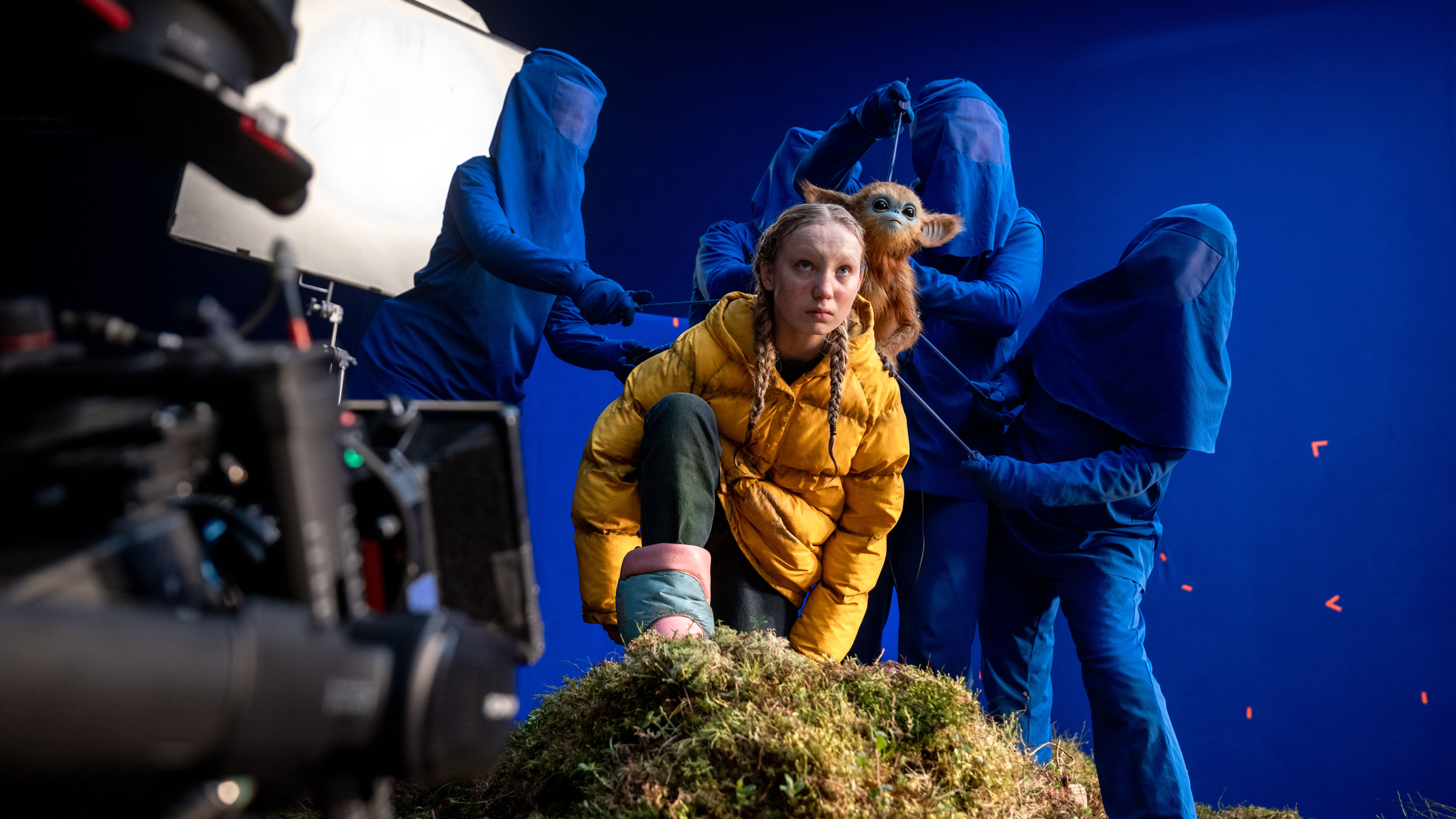Best spotting scopes
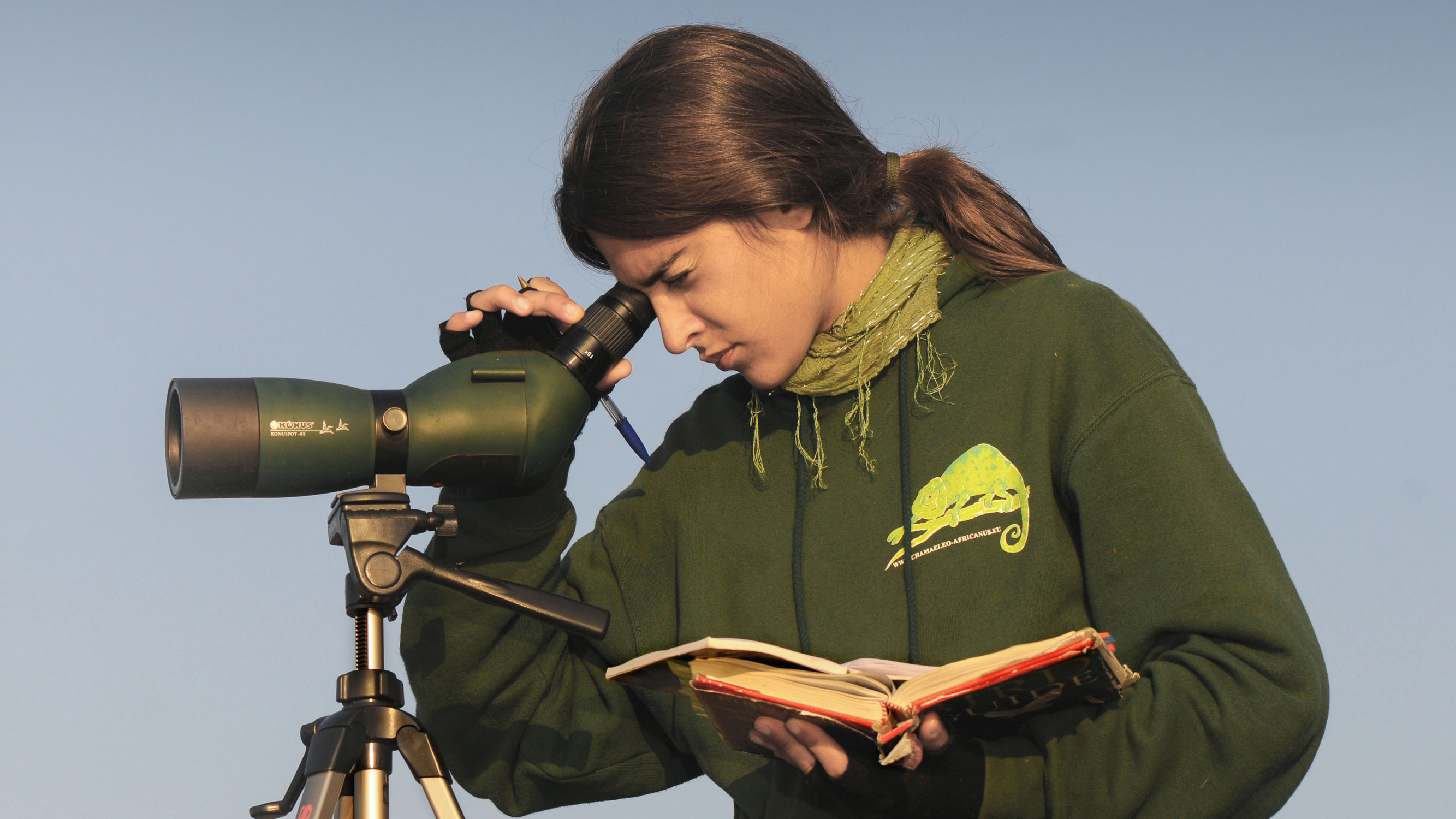
New to the world of spotting scopes? If you’re wondering how to choose the best spotting scope, fieldscope or digiscope for your budget, our handy buying guide will help.
As with choosing a pair of binoculars (from which a spotting scope is very much a step-up thanks to its greater magnification) the first consideration to make is what you need it for. Do you want it for nature, bird and wildlife watching, or observing the night sky, for example? And how much are you willing to spend? Bear in mind, too, that spotting scopes are most commonly used with a tripod, which you will have to pay extra for.
If you’re a photographer, you might be seeking out a suitable model for ‘digiscoping’ – namely taking a picture via a combination of the spotting scope and a camera (or even a mobile phone). So you’ll need to make sure both are compatible, and factor any necessary adaptors into your buying decision.
If you are into astronomy, you will have to make the decision between a spotting scope - and the more usual telescope. Telescopes are not really designed for seeing things on land, so are not useful if you also want to use your 'scope for bird-watching say. Also, telescopes are more modular - allowing you to change eyepieces - but are not as easy to transport around or set up in a hurry.
Straight or angled?
There are a couple of different construction types when it comes to choosing the best spotting scope, too: either a straight or an angled body. As the first suggests, the body and eyepiece of the scope lie on the same optical plane, enabling you to look straight through the eyepiece at your intended subject. In an angled-body spotting scope, the eyepiece is situated at 45 degrees to the body, meaning your line of sight is also at an angle. The second type of scope allows for more comfortable use when lying or sitting and saves having to crane your neck, no matter what height you are.
Magnification range
Spotting scopes typically have specifications that comprise three numbers: the first two indicating magnification range, and the third the size of the front lens. For example, 14-45x60 would indicate that the front lens has a diameter 60mm, and has a magnification range going from 14x up to 45x.
A larger lens will, broadly speaking, provide a better, more detailed image, while a higher magnification range will enable you to use the scope for a broader range of subjects.
Ultimately, when it comes to scopes, there’s plenty of, ‘scope’. So, to help narrow things down, we’ve compiled a list of the 10 best spotting scopes to suit a variety of pursuits and budgets…
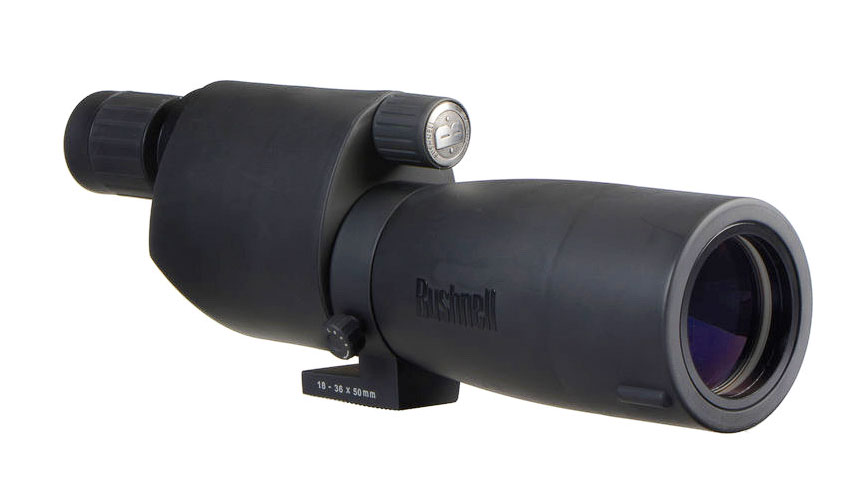
Bushnell Sentry 18-36x50
Specifications
Reasons to buy
This sleek-looking spotting scope solution comes with a straight eyepiece and won’t break the bank. Despite the budget price, the Bushnell Sentry 18-36x50 is also impressively waterproof, with proper O-ring sealed optics, so the internal workings stay fully dry, even when the Bushnell is submerged in water.
In terms of the optical performance, multi coatings help ensure reflections are avoided and all ‘air to glass’ surfaces deliver bright, high-contrast images. The porro prism system also features twist-up eye cups and a comfortable 16mm eye relief. Weighing 877g despite the moisture-sealed build, this is still a relatively manageable and portable spotting scope.
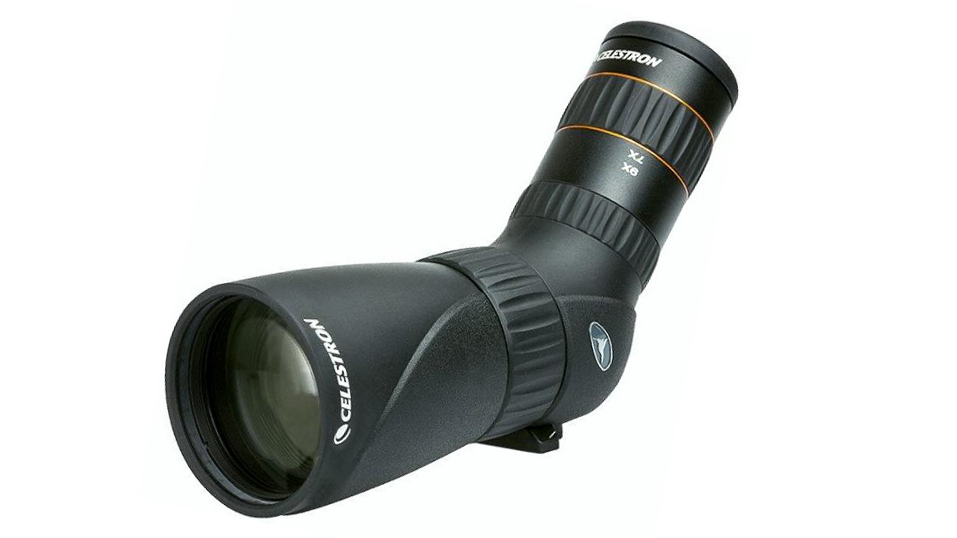
Celestron Hummingbird 9-27x56 ED
Specifications
Reasons to buy
Like the Hummingbird it takes its name from, the Celestron Hummingbird 9-27x56 ED spotting scope is small and mobile, with a manageable weight of 590g. That means it’s also ideally suited to taking on your travels. It will fit into a roomy jacket pocket, a rucksack or shoulder bag, and can be stashed in carry-on luggage.
At its lowest 9x magnification level, it can even substitute for a binocular – giving you, in effect, two products in one. What’s more, the device is waterproof and nitrogen filled to prevent fogging. Although it is small enough to be comfortably held in the hand, this model is also tripod, monopod and window-mount adaptable, giving it an extra degree of versatility. In summary, if you’re looking for a more portable alternative to a full-sized spotting scope, this ‘bird is hard to beat. What’s more, it’s also camera-adaptable for those into digiscoping.
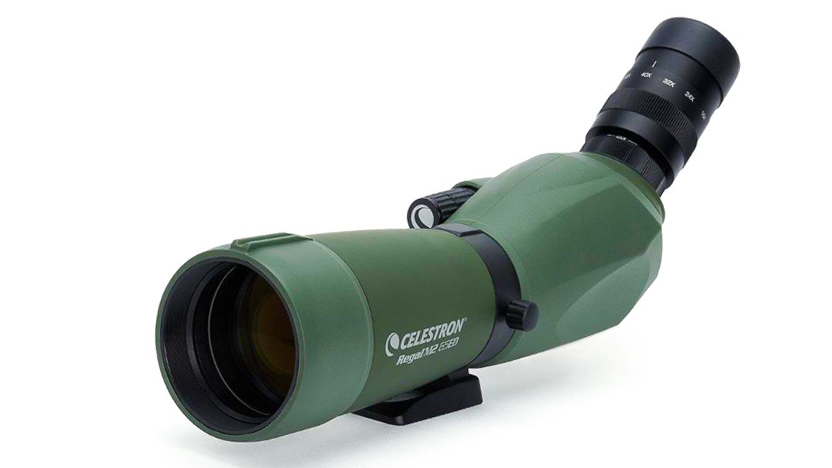
Celestron Regal M2 65ED
Specifications
Reasons to buy
The Celestron Regal M2 65ED is a premium spotting scope that is nevertheless fair value in its price range, offering suitability for everything from bird watching in the day to watching the heavens at night. Celestron claim that this second-generation unit has reduced the overall weight of the spotting scope by more than 14 per cent, while still providing a rugged magnesium alloy body. Further, advantages include the fact that it has an upgraded dual-focus mechanism, which enables users to bring their subject into focus two times swifter.
Factor in premium features such as Extra Low Dispersion (ED) glass found in the best camera lenses, and this is a key contender for your cash. What’s more, a camera can be attached to the Regal using an included T-adapter ring for DSLR; a scope with plenty of scope, this one.
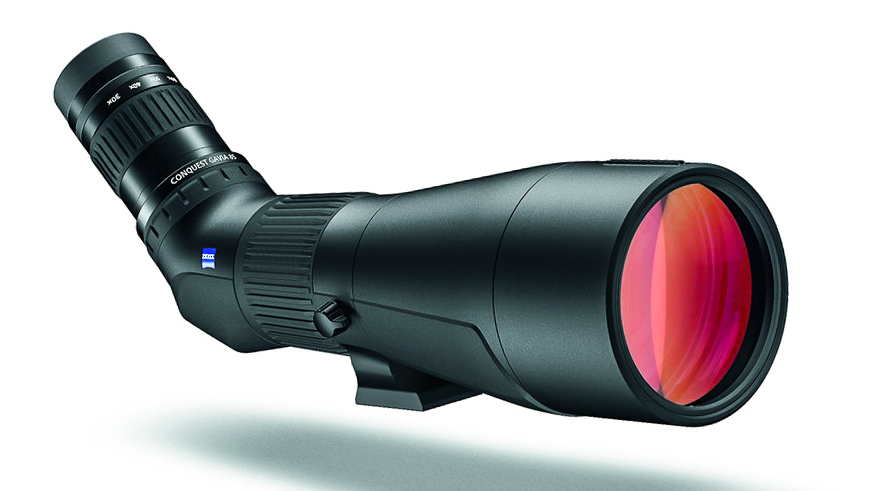
Zeiss Conquest Gavia 85
Specifications
Reasons to buy
Any photographer will recognize the name Zeiss as being the bee’s knees for optical quality, so selecting a Zeiss scope for wildlife and nature photography has got to be a sensible decision. Of course, Zeiss don’t come cheap, but the Zeiss Conquest Gavia 85 is versatile due to a rapid focus mechanism and a close near-focus setting, so even observing smaller objects or wildlife is claimed to be easier than ever.
Of course, you only have to look at the name of the product to see one great advantage – namely a whopping 85mm-diameter objective lens, useful for low-light observation. Couple this with a zoom-magnification range up to 60x and a fog-proof, nitrogen-filled construction, and you’ve really got something.
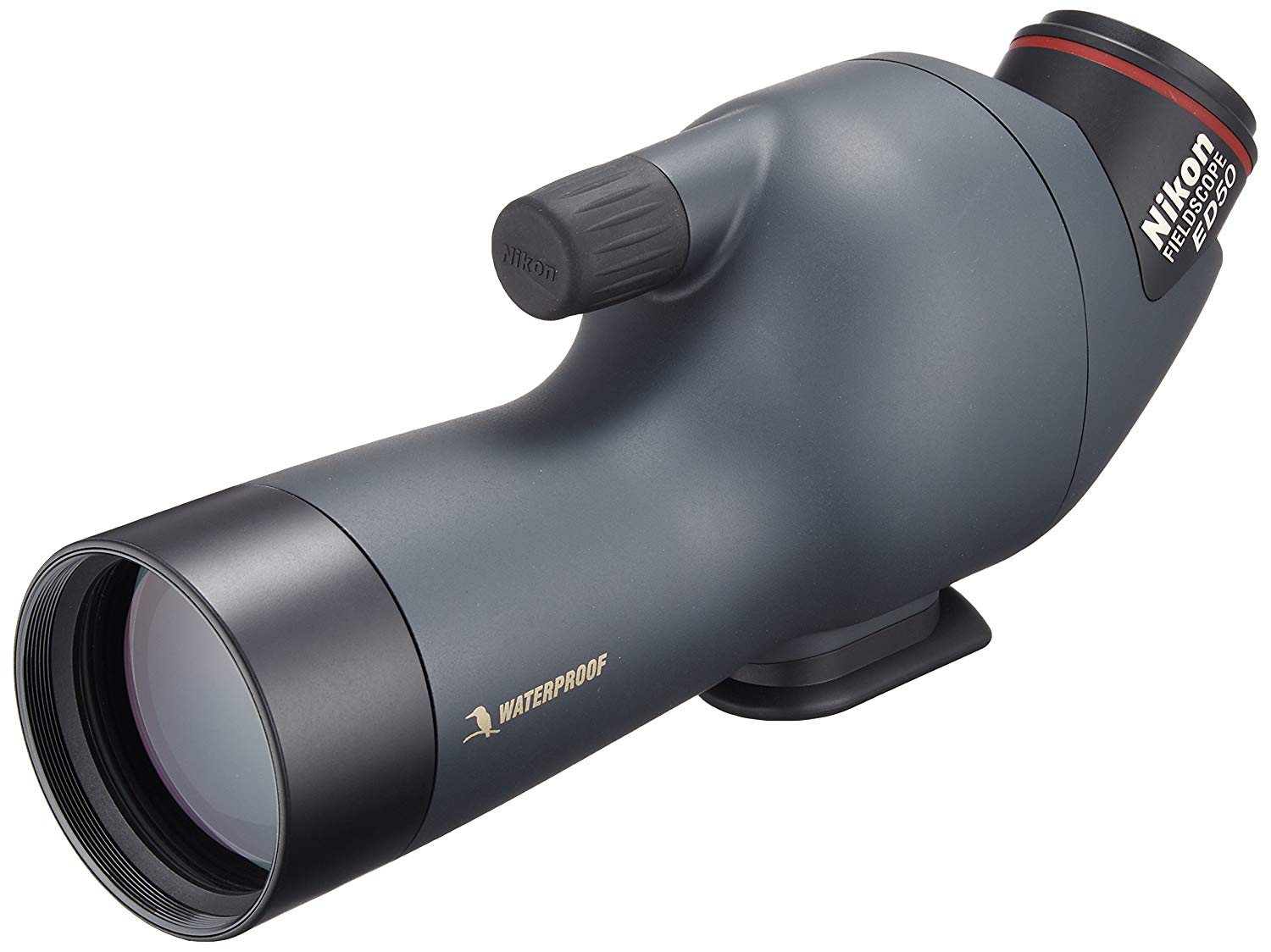
Nikon Fieldscope ED50
Specifications
Reasons to buy
It’s no surprise that camera and optical manufacturer Nikon produces scopes with the ability to attach a camera and enjoy the art of digiscoping. Indeed, Nikon has its own digiscoping system. There’s a lot of choice in this field, but the Nikon Fieldscope ED50 offers a 50mm objective lens (to which a 55mm filter can be attached if desired) and is both relatively compact and lightweight with it.
It also ticks the boxes for the regular must haves, such as a fog-banishing nitrogen-filled construction and built-in waterproofing (it can even be submerged up to a meter for five minutes) for those inclement seasons, along with a multilayered lens coating to ensure superb light transmission and, ultimately, high-resolution images.
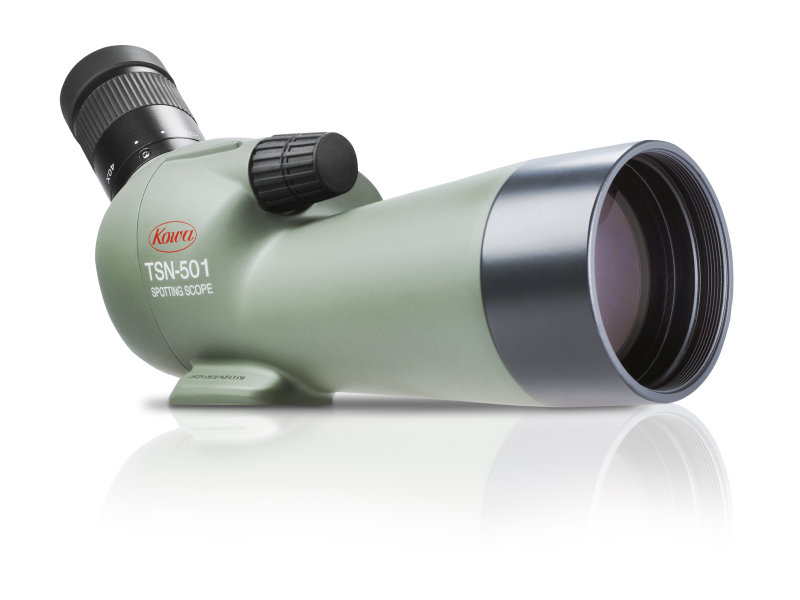
Kowa TSN-501
Specifications
Reasons to buy
Why have we chosen the Kowa TSN-501 as an ideal candidate for kids? Well, not only is this polycarbonate constructed model compact and lightweight at 400g, so little arms won’t get tired, but there is a separately available adapter ring for it that allows a smartphone to be attached, so youngsters can also explore the art of digiscoping for themselves.
As well as being lightweight, it measures just 239mm in length, plus it's available in a choice of angled or straight models, adding versatility to the fact that it's suitable for all ages. Added to this, the scope is waterproof and nitrogen filled. The 20-40x zoom has a twist operation, furthering the simplicity and speed of this one’s operation. Actually, having noted all the above, we’ve realized that this is too good to be just for kids.

Celestron Ultima 80
Specifications
Reasons to buy
Sure, plane spotters are just slightly above train spotters when it comes to being the butt of good-natured jokes, but there’s nothing funny about the waterproof Ultima 80 from industry stalwart Celestron, which offers a 20x to 60x magnification range, wedded to a large and bright 80mm objective lens.
Offering a comfortable 45-degree viewing angle, a closest focusing distance of eight meters is acceptable too, when your quarry is an aircraft, not a rare butterfly on a bush. Likewise, a weight of 1,616g is – while not the most portable option out there – again perfectly reasonable given the feature set and bang for your buck. What’s more, this particular model can be adapted for use with a camera, so you can capture a pictorial record of a 747 landing – before you stash the scope in hand luggage and jet off yourself.
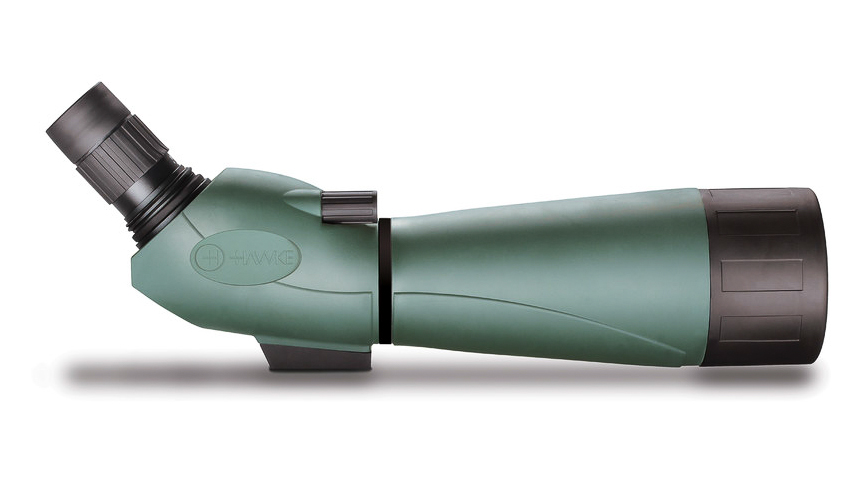
Hawke Vantage 24-72x70
Specifications
Reasons to buy
When it comes to gazing wistfully at the heavens, a dedicated telescope is best, though are plenty of general-purpose spotting scopes that will act as a stand in, or alternative. Enter the Hawke Vantage 24-72x70 from the Hawke brand, a multi-purpose spotting scope that has the distinct advantage of an impressive 24-72x magnification range, as well as coming bundled with an adjustable mini tripod and integrated window mount.
For those who want to take it out in the wild to avoid light pollution affecting the view of the sky at night, it also has the advantage of a tough rubber body coating plus a waterproof construction. Its maker further claims its porro prism design delivers intense color and contrast. And did we mention the affordable price point?
Get the Digital Camera World Newsletter
The best camera deals, reviews, product advice, and unmissable photography news, direct to your inbox!
Gavin has over 30 years’ experience of writing about photography and television. He is currently the editor of British Photographic Industry News, and previously served as editor of Which Digital Camera and deputy editor of Total Digital Photography.
He has also written for a wide range of publications including T3, BBC Focus, Empire, NME, Radio Times, MacWorld, Computer Active, What Digital Camera and the Rough Guide books.
With his wealth of knowledge, Gavin is well placed to recognize great camera deals and recommend the best products in Digital Camera World’s buying guides. He also writes on a number of specialist subjects including binoculars and monoculars, spotting scopes, microscopes, trail cameras, action cameras, body cameras, filters and cameras straps.

